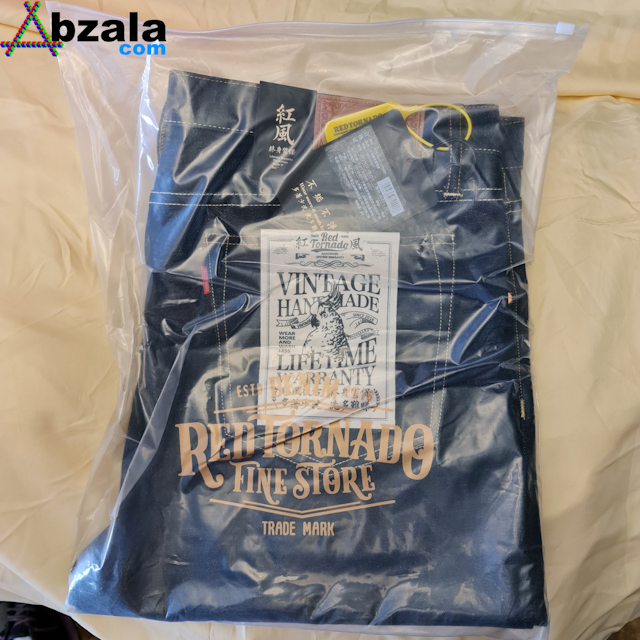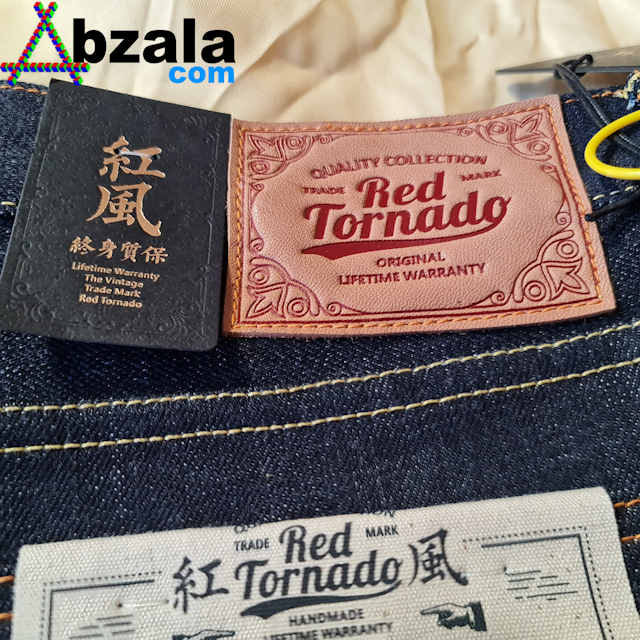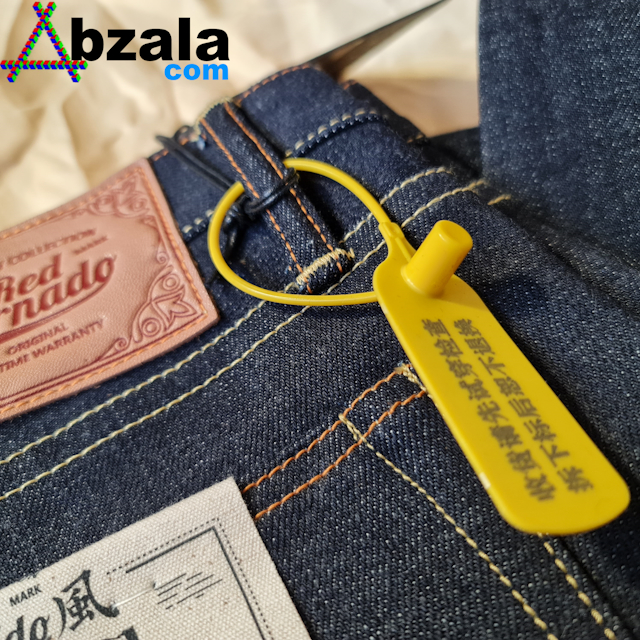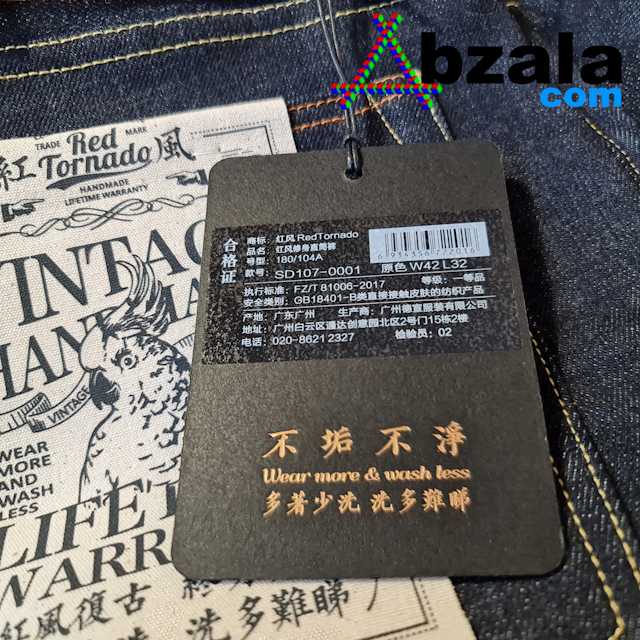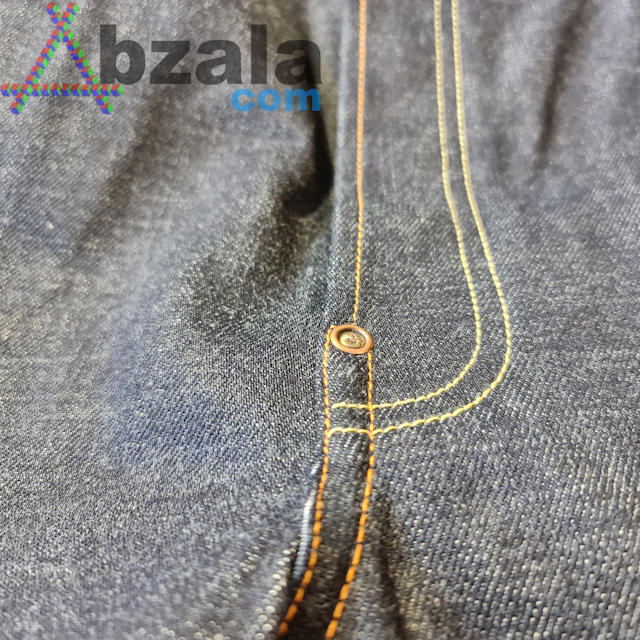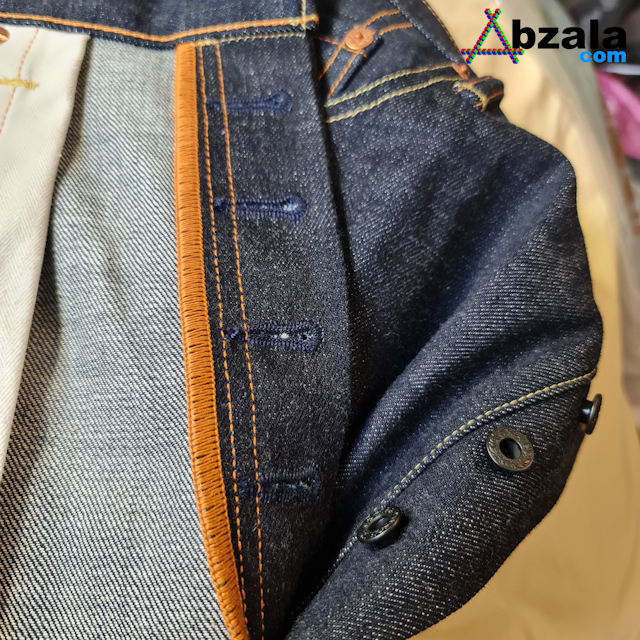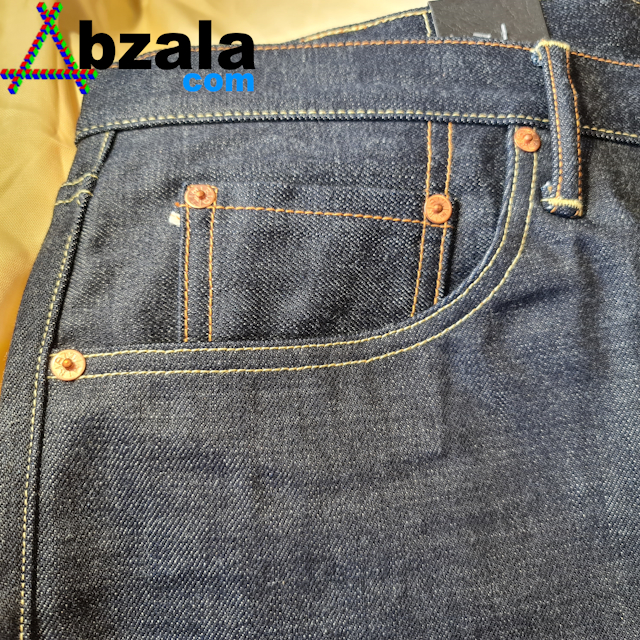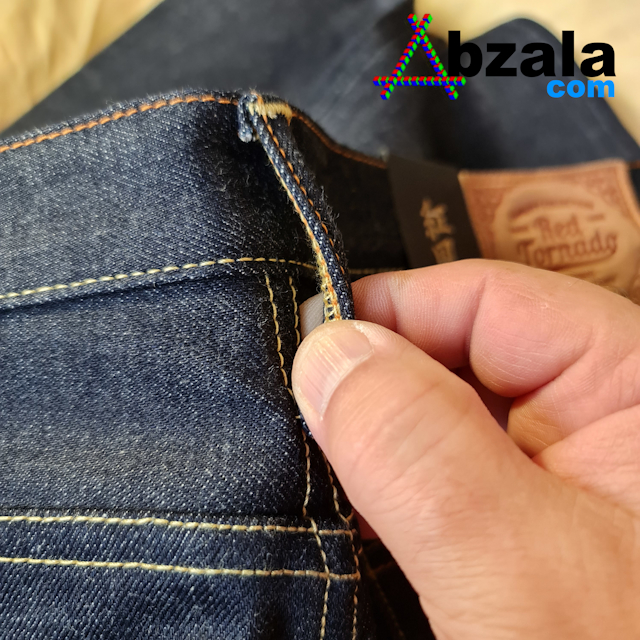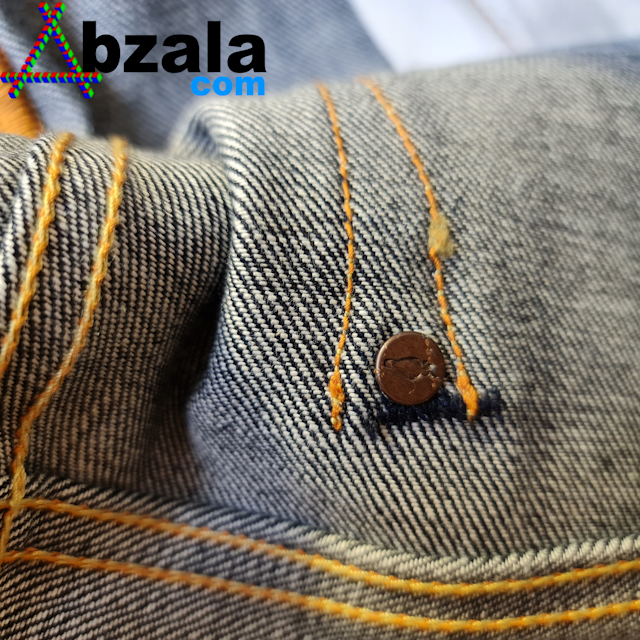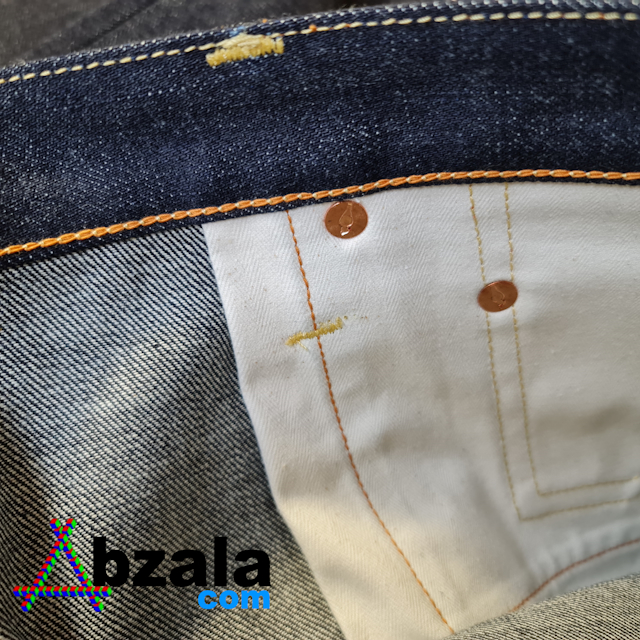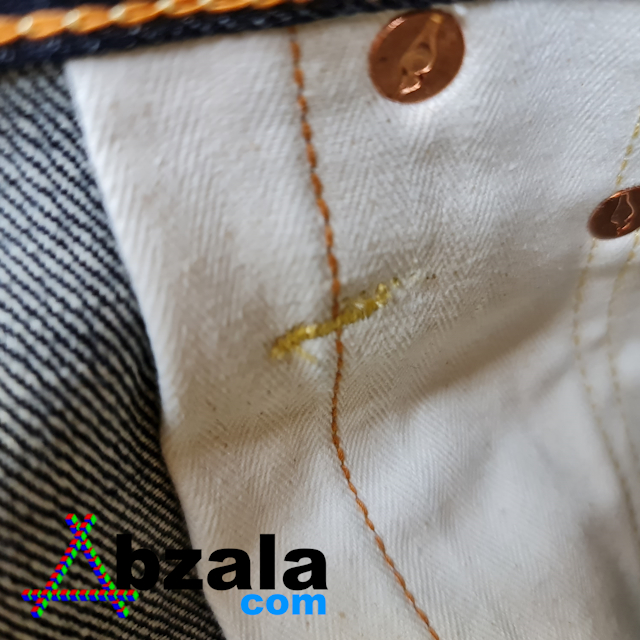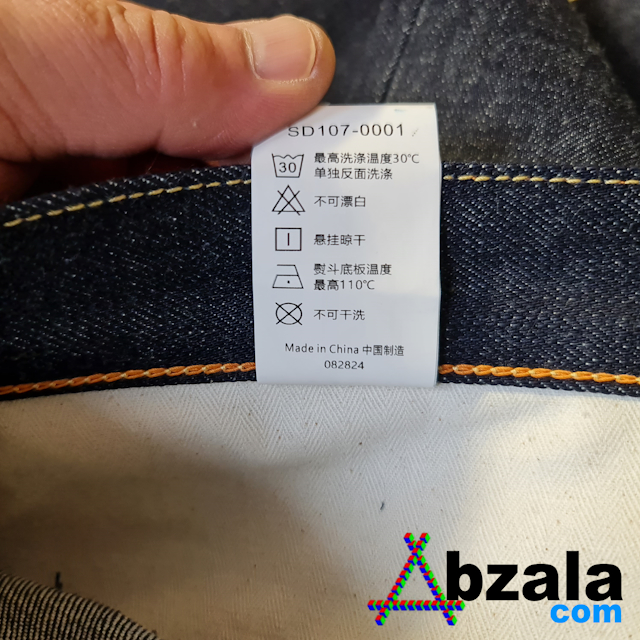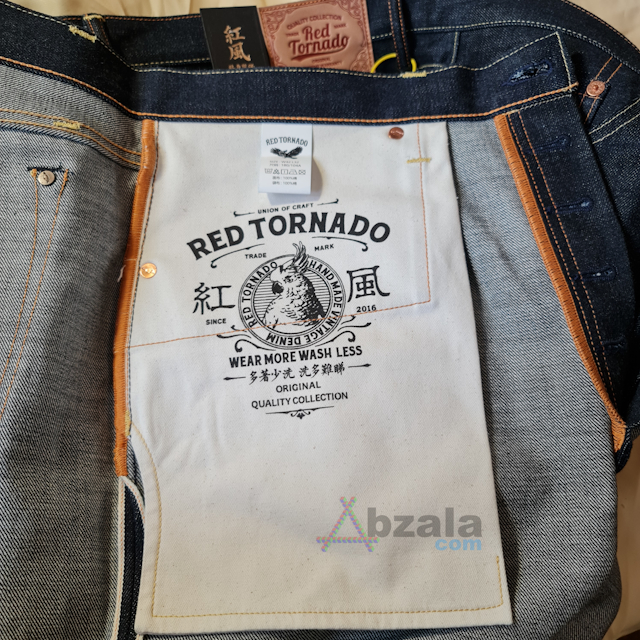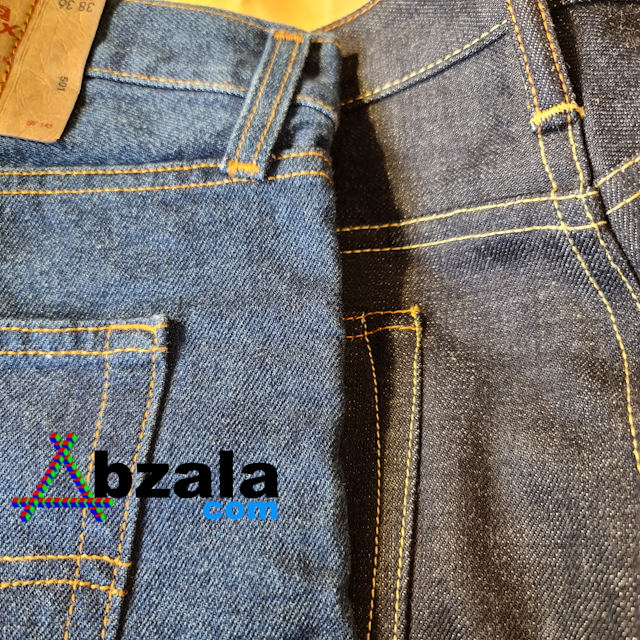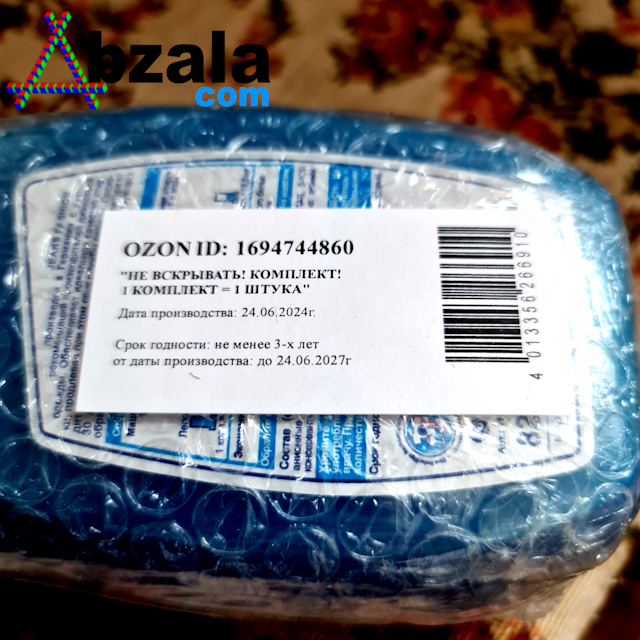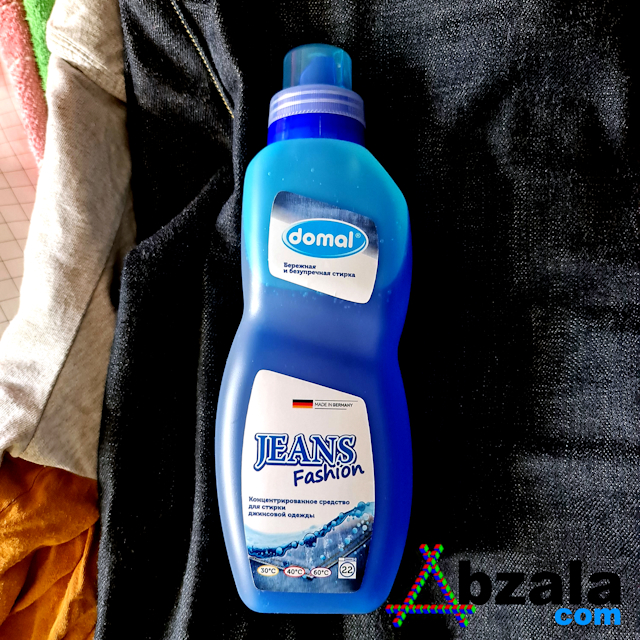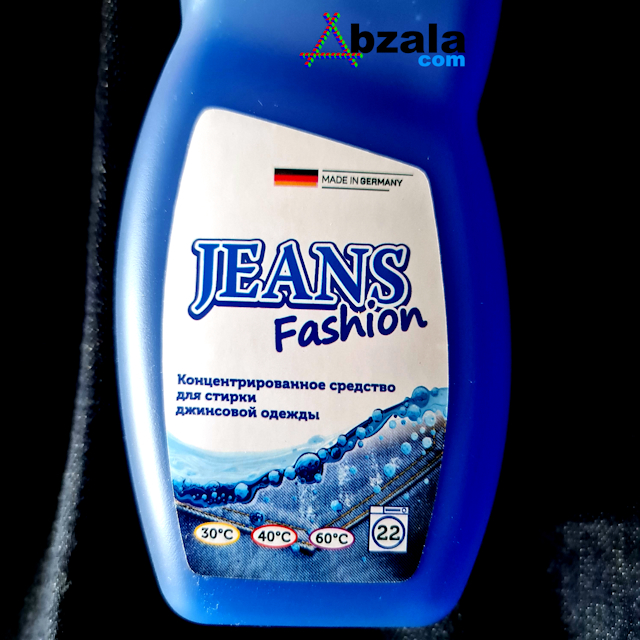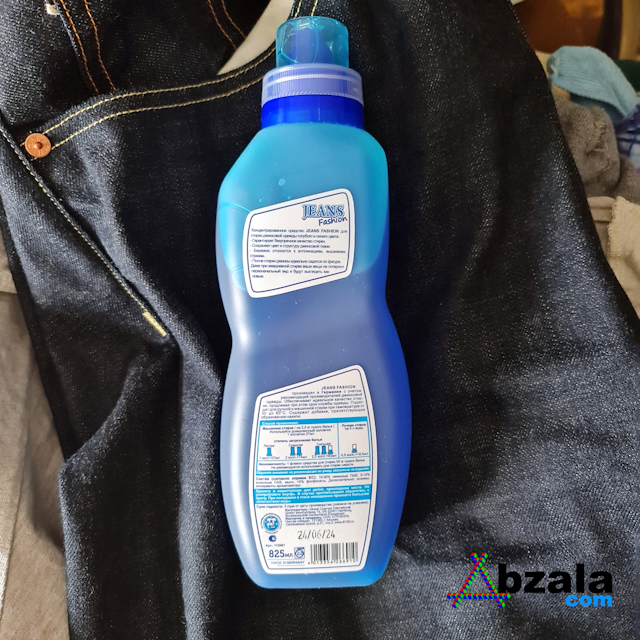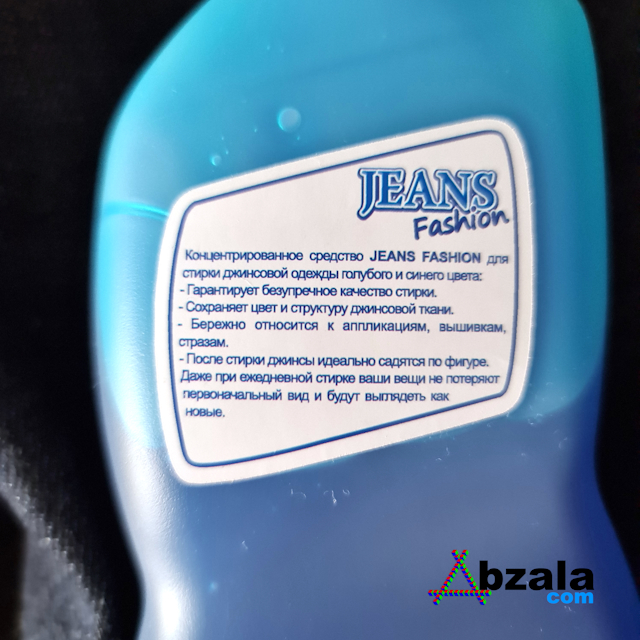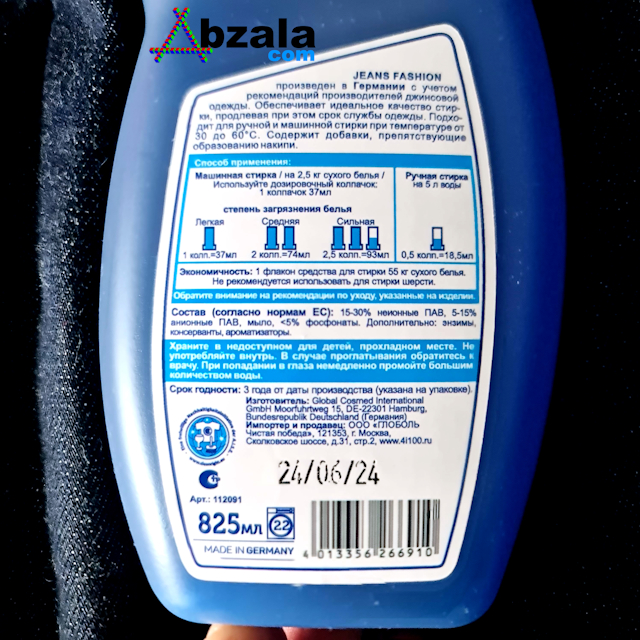There are calls on Russian television to ban jazz and jeans, and before everyone is forced to wear a uniform, I decided to buy myself some good jeans that would be as close as possible to the original vintage ones.
By the way, I have genuine vintage Levi's jeans from the late 60s and early 70s, but I've outgrown them and can't wear them anymore.
I'll write right away that I'm not an expert in the field of denim items and I don't know the slang. The purpose of the article is to convey the feeling of a quality item.
The jeans are delivered in a plastic bag. When you take the bag, you immediately feel the power and quality, starting from the thickness of the bag to the weight - the jeans weigh about 1600 grams, for the declared size 42 by 32.
When you open the package, the feeling that it's a good thing only increases; you can't even believe that the jeans were made by the Chinese.
The Japanese were the first to come up with the idea of producing authentic, vintage clothing, having bought (if my memory serves me right) old Levi's equipment in the 50s, on which they began to sew copies of Levi's with some changes.
At the time when Levi's was practically dead, the Japanese and Chinese realized the demand for quality items a la old America.
This movement intensified in the 1990s.
Despite the fact that Chinese sewing is cheaper than Japanese, nevertheless, the companies promise a lifetime warranty.
Even though the jeans cost around $100, for that money you get a nice feeling that the money was well spent.
Even the number of different labels is striking.
I chose this pair with a thickness of 17 ounces. The Japanese produce Samurai jeans up to 25 ounces. I did not find such a density, and I did not really look for it, since I have no desire to wear welding overalls, and thick jeans break in the crotch and quickly wear out in the groin area.
As I understand it, the main characteristics are printed on the tag. If you have the opportunity, you should ask the seller to show you the tag. So I took this pair of jeans in size 42 by 32. The tag says 180 / 104. Divide 104 by 2 to get size 52. Measuring with a ruler gives size 54 before washing. After washing, most likely, it will be size 52. Let me remind you that I was counting on size 56.
For beautiful fading (uneven rubbing of paint) and strength, the crotch of the jeans has a shelf and a rivet.
This model is made with bolts (buttons), as befits the 501 model from Levi's.
All seams on Red tornado jeans are moderately even and overlocked as much as possible at the edges.
The threads are orange and yellow, not just orange like Levi's. The rivets are all copper. I got jeans with rivets without meat (pieces of material that are visible through the rivets), some buyers write that they get jeans with rivets with meat. I am indifferent to this matter - it is only a sign of the precision of the equipment and fittings, when the rivets are without meat.
The tag on the back pocket is red, like Levi's, only the inscription REDTORNADO.
The belt loops also have shelves (thickening) and will rub beautifully. In addition, they provide additional strength.
The back pockets have hidden rivets, like the old Levi's.
Levi's originally had exposed rivets on the back pockets, but then they were hidden and tucked under the material because they scratched the horses' saddles. Then "efficient managers" removed them altogether to make production cheaper.
The bags (pockets) are reinforced at the bottom with a lining.
Unfortunately, the history of jeans models, as well as American clothing and footwear, shows a general, global trend towards the impoverishment of the planet's population - clothing and footwear are becoming lighter, thinner, worse and disposable. This is especially evident in jeans - from high-quality, well-wearable jeans are simply a rag.
Some of the rivets have a varnish coating.
The bags are made of thick, dense twill (in my opinion), but some call this material differently. Perhaps I am wrong.
The inner tag states that 100% cotton is used. The sizes in inches and centimeters are also indicated, with the centimeters being the exact value. It is not entirely clear why these parameters are not indicated when selling.
It should be noted that the height is indicated after washing, therefore, although the jeans have a fair reserve in length, they cannot be shortened - they give a strong shrinkage in height. It is better to fold the bottom of the jeans and wear them like that, especially since this is the correct way to wear jeans.
The tag also states that machine washing is prohibited and only hand washing at 30 degrees Celsius is recommended. It also states that ironing is only possible at 110 degrees Celsius. I wonder how the buyer is going to get fading if he irons the jeans and they do not bunch up.
The right bag (pocket) has a brand and manufacturer patch, the date of creation of the brand - 2016, as well as the manufacturer's wish: Wear more wash less.
Let me remind you that, if my memory serves me right, the patch (picture) on the pocket began to be applied in the 80s, so if you are lucky enough to buy vintage Levi's jeans, you should not see this patch, otherwise you were simply deceived.
Selvedge Line is white with red thread.
It is important to understand that the Chinese did not produce a direct clone of the old Levi's 501 - there are changes. In addition, the old Levi's had a triple twist thread (and on some American jeans, a quadruple twist), and not double as the Chinese have, so the fabric is more voluminous. The photo clearly shows that the Chinese jeans have white and dyed threads 50 \ 50, and the original vintage samples, presumably from the 70s, have almost no white thread.
Regarding jeans care; there are a lot of videos on how to soak and wash jeans. I was especially amused by one video where a person was seriously telling me how to wash by hand, after three months of wearing without washing, with Russian soap. At the same time, this person repeated the phrase "natural soap" several times - he probably really thinks that for the pennies that Russian laundry soap is sold for, it will be natural, like in the USSR.
In addition, the video shows that the structure of the jeans fabric has already been eaten away by the alkali of the laundry soap. My practice of wearing jeans and my lifestyle led me to the following conclusions:
- Wearing jeans for a long time without washing them leads to the fabric being corroded by sweat and dirt.
- After a week of wearing jeans, the "aroma" of your body will start to be felt by those around you. If you are a fucking devil, you can continue wearing them.
- It is simply impossible to do any hand washing in modern times due to lack of time. If you have cotton advertising in your lifestyle or work related to it, then you should know what is possible and what is not.
- The appearance and condition of fading (uneven dyeing of jeans) depends on the quality of the washing machine, the washing mode and the quality of the detergent.
This photo clearly shows that genuine quality American jeans do not lose fading when washed with Japanese powder for colored laundry. Yes, the fabric shows whiskers and creases, but this reflects my lifestyle and they are just everyday work pants, not a Faberge egg.
I don't see any point in going into a description of the jeans subculture, as I already wrote that the purpose of the article is to describe the emotions and sensations of jeans and to show that quality items at a reasonable price a la "Old America" can still be bought, even if they are not made in the USA. In addition, I am not a fan or specialist in denim - I am more advanced in genuine leather, if you have any comments, please write in the comments.
Bottom line: Real, great jeans that are worth the money.
P.S.
On the advice of one of the reviewers, I bought a special detergent for jeans, Domal, on Ozon.
The product is made in Germany.
The product meets all the requirements of denim clothing manufacturers.
If you do not soak raw denim, the jeans will break due to starch and the jeans will quickly tear.
I used one cap for half a bath. In the future, you can use 1 \ 3 baths and half a cap, since the product is concentrated and of excellent quality.
Interestingly, until the jeans were left in water with detergent for about an hour, the indigo did not come out at all.
Jeans Red tornado SD107-0001, as befits real jeans after washing, stood upright if you put them on the floor in a vertical position. After a week of wearing, fluff begins to appear on them, like old American jeans.
There are more and more things that require hand washing and you become like a washerwoman at a dry cleaner, so I still think that: a thing is for a person, not a person for a thing, so I will most likely wash things in a washing machine.

 Russian (Russia)
Russian (Russia)  English (United Kingdom)
English (United Kingdom) 
